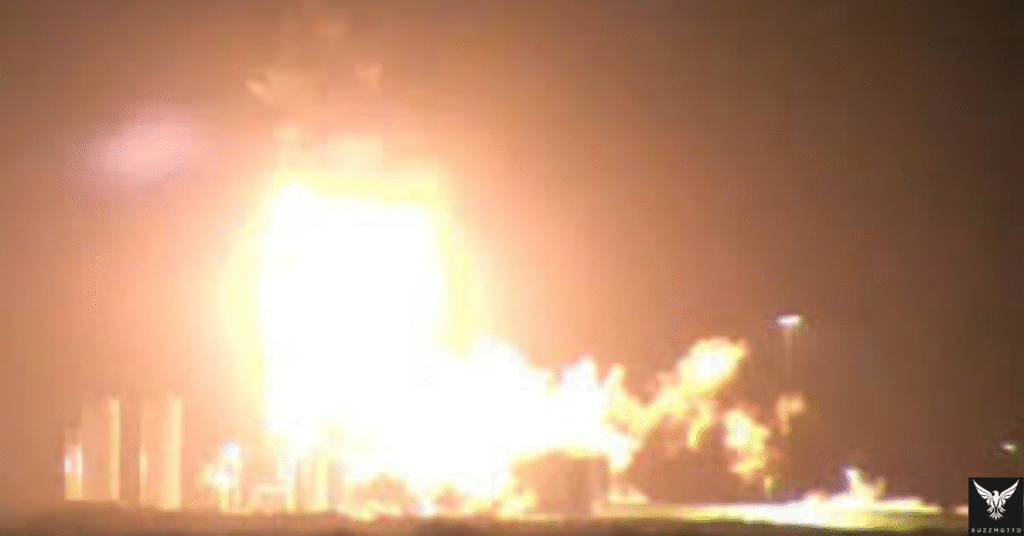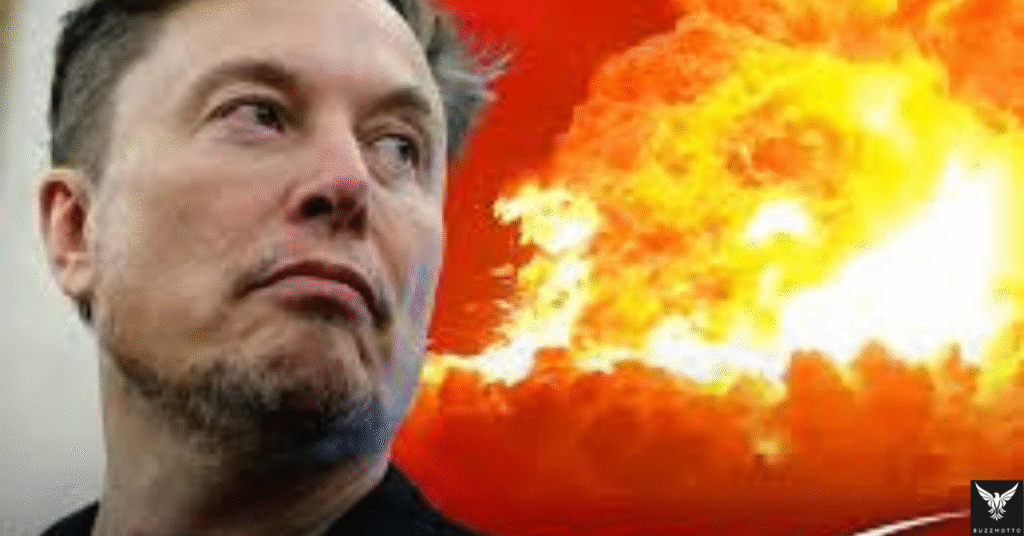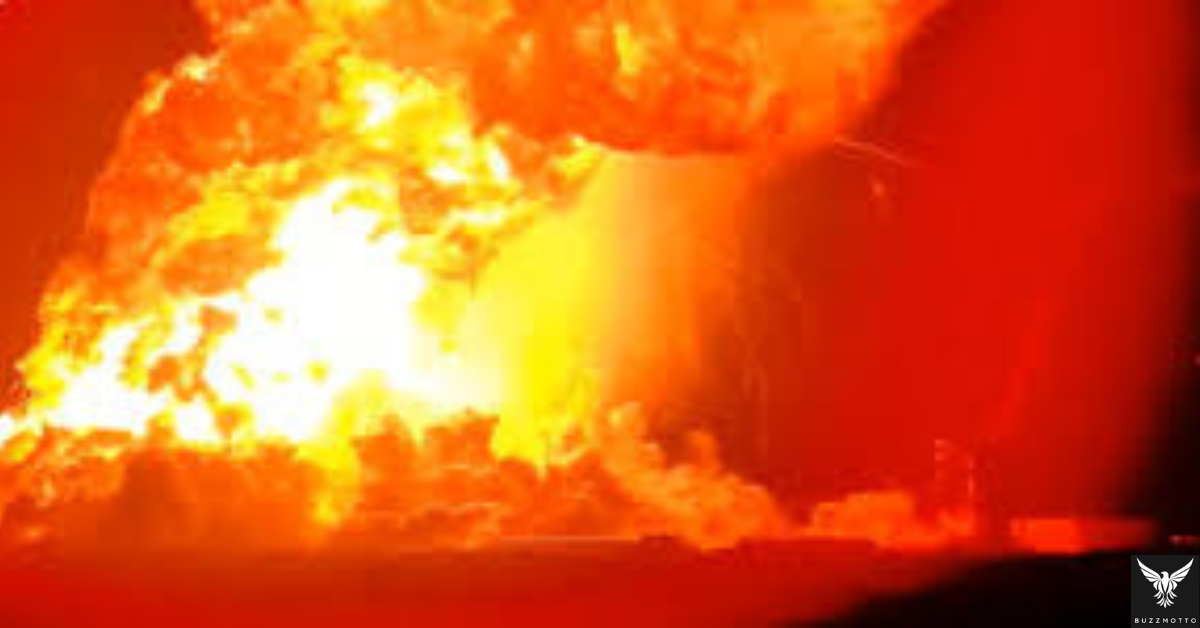Table of Contents
In a stunning and fiery spectacle over the South Texas night sky, SpaceX’s colossal Starship rocket met a dramatic end during a routine ground test on Wednesday, June 18, 2025. The explosion, which occurred at approximately 11 p.m. local time at the company’s Starbase facility in Brownsville, marked yet another setback in what has been a turbulent year for Elon Musk’s ambitious spaceflight program.
Though no injuries were reported and there was no threat to nearby communities, the explosion has once again drawn intense scrutiny and global attention to the world’s most powerful rocket system — and the high-risk innovation culture that surrounds it.
🌌 What Happened: The Test That Turned Into a Fireball
SpaceX confirmed the event was a result of a “major anomaly” during a ground-based engine test on a Starship prototype, specifically designated Starship 36. The vehicle was mounted on a test stand when it suddenly burst into flames, followed by at least one secondary explosion.
Eyewitness videos taken from nearby areas showed the night sky over Cameron County ablaze with a massive fireball, visible for miles. Debris was reportedly scattered around the test site, but SpaceX and local emergency teams quickly secured the area.
A statement from SpaceX read:
“Starship experienced a significant anomaly while on the test stand. Our Starbase team is actively working to secure the site and ensure the safety of surrounding areas in coordination with local officials.”
Though explosions are nothing new in the world of rocketry, the sheer size and frequency of issues with Starship are raising fresh concerns. This was not a flight test, but rather a static fire test meant to simulate an in-space engine burn — and it ended in disaster.

🧪 Why Did It Explode? Elon Musk Shares Preliminary Insight
As investigators began examining telemetry data and hardware remains, Elon Musk offered an early explanation on his social platform X (formerly Twitter). He revealed that preliminary analysis pointed to the failure of a nitrogen composite overwrapped pressure vessel (COPV) in the payload bay.
“Preliminary data suggests that a nitrogen COPV failed below its proof pressure,” Musk said. “If confirmed, it would be the first failure of this design in this way.”
COPVs are used to store pressurized gases like helium or nitrogen and are critical to many rocket functions. If one fails catastrophically, it can lead to significant destruction — especially in a vehicle packed with fuel lines, high-voltage electronics, and oxidizers.
SpaceX has not released detailed findings yet, but the investigation is ongoing. Experts note that identifying the root cause will be vital not just for Starship’s future, but for all of SpaceX’s next-generation spacecraft engineering.
🚀 The Dream of Starship: Mars, the Moon, and Beyond
The Starship vehicle is not just any rocket. It’s the centerpiece of Elon Musk’s grand plan to make life multiplanetary. Standing at a towering 400 feet tall when stacked with its Super Heavy booster, Starship is the largest and most powerful rocket ever built. It is designed to be fully reusable, carry over 100 metric tons of cargo, and one day — humans — to the Moon, Mars, and beyond.
NASA has already selected Starship for its Artemis III mission, aiming to return humans to the lunar surface in the coming years. SpaceX envisions the rocket serving everything from space tourism and satellite deployment to interplanetary colonization.
However, such groundbreaking ambitions come with equally massive engineering challenges. The Starship project has been plagued with repeated test failures, explosions, and delays since its early days in 2019. Musk himself has acknowledged the risky nature of testing, often using phrases like “test, fail, learn, repeat” as part of SpaceX’s core philosophy.

📉 Setbacks in 2025: A Troubled Year for SpaceX
The June 18 explosion is the latest in a series of technical problems that have hampered Starship in 2025. Earlier this year, two test flights ended prematurely due to issues with stage separation and heat shield failures during reentry.
Flight Test 9, conducted in April, suffered a loss of control during descent, forcing engineers to abort the mission before splashdown. In May, SpaceX faced a weeks-long delay in static fire testing due to faulty valve components.
Although setbacks are expected in cutting-edge aerospace programs, the frequency of failures this year is beginning to test investor patience and regulatory oversight. Some critics argue that the pace of development is too aggressive, risking both hardware and long-term trust.
Still, Musk remains undeterred.
“If you’re not blowing up rockets, you’re not innovating fast enough,” he tweeted earlier this year. “Each explosion teaches us more than a successful flight ever could.”
🛡️ Safety Measures and Community Response
Following the blast, SpaceX worked swiftly with local emergency officials to secure the area. Cameron County officials reported no damage to residential areas or infrastructure. The company asked residents to stay away from the Starbase area until cleanup and safety inspections were completed.
The Federal Aviation Administration (FAA), which oversees commercial space launches in the U.S., has initiated a formal investigation. FAA protocols require that any incident involving a launch vehicle must be thoroughly examined before further tests can proceed.
Local community responses have been mixed. While many residents of Brownsville have come to embrace their city’s new identity as a “gateway to space,” others are growing weary of the constant booms, road closures, and environmental risks associated with rocket testing.
🌍 Global Reactions: Innovation vs. Risk
Around the world, news of the explosion made headlines, highlighting once again the fine balance between innovation and risk in space exploration. While some praised SpaceX’s transparency and willingness to push boundaries, others questioned the sustainability of a model that seems to accept catastrophic failure as part of progress.
Industry experts were quick to note that test failures are part of aerospace history. NASA’s Saturn V, the Space Shuttle program, and even modern-day rocket systems like Blue Origin’s New Glenn have all faced setbacks.
However, what sets SpaceX apart is its rapid development cycles and its almost fearless embrace of trial-and-error — a method that, while sometimes explosive, has also led to breakthroughs that would take traditional aerospace companies years to match.

🔭 What’s Next for Starship?
Despite this fiery failure, SpaceX is unlikely to slow down. The company has multiple prototypes in development and continues to build out its launch infrastructure both in Texas and at Cape Canaveral, Florida.
Engineers will now analyze the data from Starship 36’s failure to improve hardware and software systems. Meanwhile, the next iteration — Starship 37 — is already being assembled and could be ready for testing within weeks.
NASA, for its part, has expressed confidence in SpaceX’s ability to overcome setbacks, noting that early-stage testing often reveals issues that must be solved before human missions can proceed.
Whether or not this latest explosion will delay SpaceX’s goal of orbital reusability or its lunar ambitions remains to be seen. But one thing is certain: the road to Mars will be paved with both triumphs and fireballs.
📲 Final Thoughts: Reaching for the Stars, One Test at a Time
The explosion of Starship 36 serves as a vivid reminder of both the promise and peril of next-generation spaceflight. As Elon Musk and his SpaceX team continue pushing the envelope of rocket engineering, every success — and every failure — brings humanity one step closer to the stars.
While fiery tests may seem like setbacks, they are integral steps in building a rocket system capable of transforming space travel forever.
In Musk’s words:
“There’s no way to make progress in space without pushing limits. And sometimes, pushing limits means things break.”
For now, the skies above Brownsville have gone quiet — but they won’t stay that way for long.
Stay tuned to Buzzmotto for more updates..

